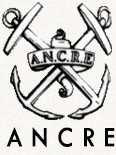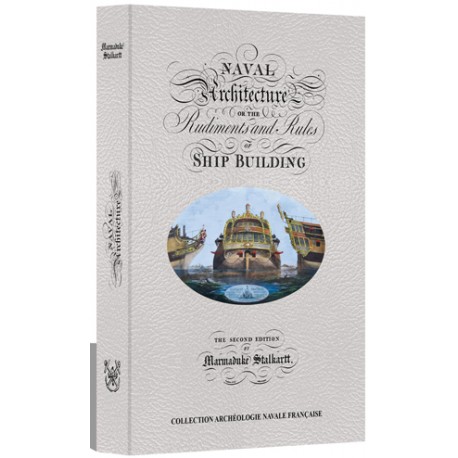Stalkartt’s Naval Architecture
First published in 1781, Stalkartt's work was an immediate success.
Volume of text: 248 pages, 22.5 x 31 cm, on 90g ivory paper in hardback.
Volume of 14 plans in various formats: 40 x 77 , 42 x 105, 55 x 140 cm.
NAVAL
 Stock bas
Stock bas

Marmaduke Stalkartt’s Naval Architecture has always been recognised as one of the most beautiful books on shipbuilding ever produced. In 1791, the European Magazine described it as follows: “For the particular instructions to make the draughts, and the enlarging them for actual building on the moulding-loft, the amplest and most satisfactory to my knowledge. Though the author seems to avoid studiously every theoretical disquisition, there will be found in it very judicious remarks useful to them”. The author confines himself only to ships belonging to the Navy. ”
The vessels depicted in the plates are: a long-boat for a third-rate, a yacht, a sloop, a 44 gun ship, a 74 gun ship, a cutter and a frigate. Each are portrayed with a body plan, a sheer-draught and a half-breadth, and most also have details of the construction and decoration of the head and the stem.
So far as is known, none of the draughts represent actual vessels: Stalkartt calls the 74 the Britain, and decorates it with an opulence more appropriate to a three-decker, and the frigate was designed by Benjamin Thompson, a distinguished Fellow of the Royal Society. His design called for a frigate measuring 150 feet on the gundeck, and armed with thirty 32-pdrs and twelve light 12-pdrs. If successful, such a vessel would have profoundly affected the development of the frigate, since the French were only just beginning to build frigates armed with 18-pdrs on the gundeck, and (if we exclude a small number of “rasées” - cut-down 74’s), nearly fifty years were to pass before the first 30-pdr frigates were launched.
First published in 1781, Stalkartt’s work was immediately successful: it was reprinted twice, in 1787 and 1803. This facsimile reprint is from the 1787 edition.
The text describes in detail the theory and practice of shipbuilding in the last quarter of the eighteenth century, and as such is a priceless testimony to the period. 18th century English books on shipbuilding are relatively few and far between.
Stalkartt’s Naval Architecture was thus the first major treatise on the subject in English for seventy years, and it antedates Steel’s Elements and Practice of Naval Architecture by nearly a quarter of a century. Stalkartt’s work consists of a text volume of 250 pages and a separate volume of plates.
Author : Marmaduke Stalkartt’
No customer comments for the moment.









